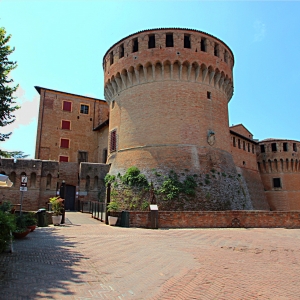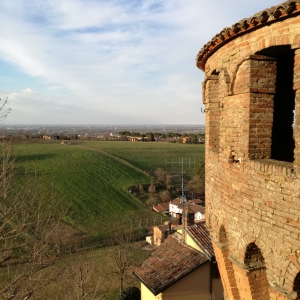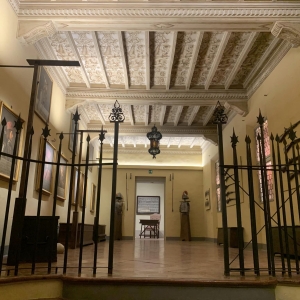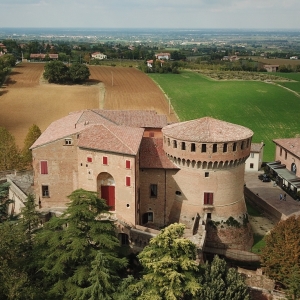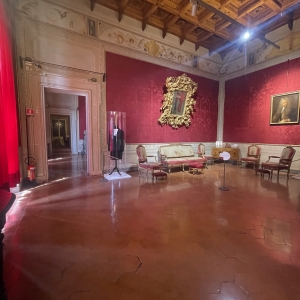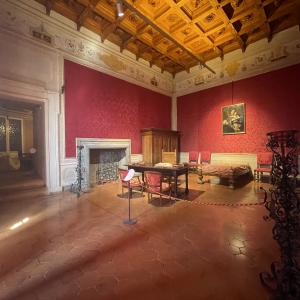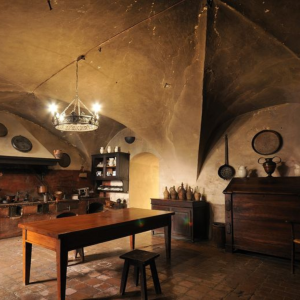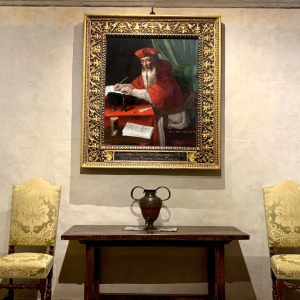MEDIEVAL AND RENAISSANCE FORTRESS
The Rocca di Dozza was built around 1250 by the will of the Municipality of Bologna and, later, it was significantly modified and enlarged to meet the needs and requirements of the various owners who followed one another. During the Middle Ages, in fact, the strategic position on the border between Bologna and Romagna made the castle of Dozza the subject of strong disputes between Bologna and Imola, between Guelphs and Ghibellines, between the Lords of Romagna and the Church of Rome. Precisely because of these vicissitudes, the Rocca was affected by numerous modifications, destructions and reconstructions until, at the end of the fifteenth century, it became part of the Riario-Sforza domains. First the count Girolamo, then the countess Caterina started substantial fortification interventions, which transformed the fortress into a real military fortress. The current external aspect of the fortress dates back to the Sforza period; using skilled and expert workers, such as the military architect Giorgio Marchesi, the Riario-Sforza family had the mighty rounded towers, the deep moat and the side entrance with a drawbridge built. These fortifications will allow the fortress to withstand the attacks of the enemies in the years to come.
RENAISSANCE RESIDENCE
At the beginning of the sixteenth century Dozza came under the direct control of the Holy See and, in this circumstance, two important Bolognese senatorial families appear on the scene, the Campeggi and the Malvezzi, who with alternating vicissitudes will hold the fortress for over four centuries. If the current external aspect of the Rocca brings to mind the medieval period, the same cannot be said for the interior, given that the layout of the building with courtyards, atrium, entrance hall, stairs, as well as the organization of the noble floor, they are largely attributable to the Renaissance period with the lordship of the Campeggi, then Malvezzi-Campeggi. In fact, around the first half of the sixteenth century, Cardinal Lorenzo Campeggi, a prestigious diplomat in the service of popes Julius II, Leo X and Clement VII, boasted substantial credits from the apostolic chamber which earned him the fiefdom of Dozza in 1529. Thus, between 1556 and 1594 the counts Vincenzo, Annibale and Baldassarre Campeggi undertook massive renovations in order to transform the fortress from a fortress into a noble residence and feudal seat of representation.
XVIII CENTURY RESIDENCE
With ups and downs, further transformations and extensions of the palace-fortress took place during the 18th century. Already during the seventeenth century, Count Tommaso Campeggi had enlarged the Sala Grande on the first floor, significantly transforming the external volumes and completing the organization of the noble floor. The eighteenth-century inventories refer to an already completed building, characterized by furnishings and paintings of great value. In 1728, on the death of Lorenzo Campeggi, the last male of the family, the fiefdom of Dozza passed by inheritance to his sister Francesca Maria, wife of Matteo Malvezzi, who transferred the feudal rights to the latter family. The son of Francesca and Matteo, Emilio, was the first to unify the name of the families in Malvezzi-Campeggi, who lived in the Rocca di Dozza until 1960.


